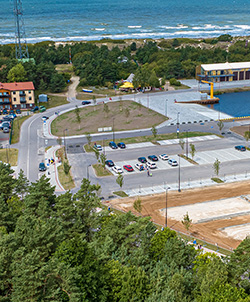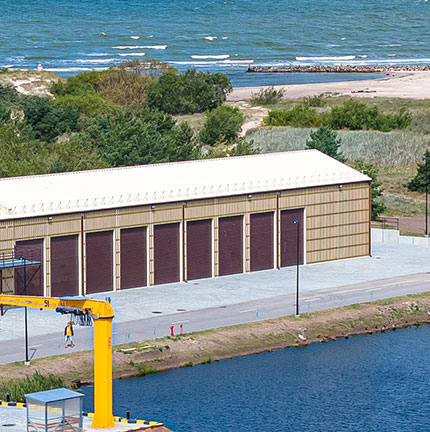About us
- Home
- About us
Mission
Šventosios valstybinis jūrų uostas – is Lithuania’s seaport located in the Šventoji settlement, near the Šventoji River. It is owned by the Lithuanian state, and the port was established by the municipality of Palanga, which, upon the proposal of the Ministry of Transport and Communications, defines the boundaries of the port’s land, waters, and reserve territories.
The purpose of the port is to:
- Serve recreational, small, and sports vessels.
- Serve fishing vessels.
- In the future, with the installation of marine piers, serve small cruise and roll-on/roll-off passenger ships.
- Serve vessels of the State Border Guard Service of the Republic of Lithuania, specialized rescue, oil spill response, firefighting and marine environmental protection, navigation and fishing control, and other state institutions.
- Serve the auxiliary fleet and emergency response measures of the Būtingė oil terminal.
- Carry out primary fish processing and develop trade.


History
The Port of Šventoji has been known for more than 300 years, when it competed with the ports of Klaipėda, Königsberg, Liepāja, and Riga. Goods were transported from the Port of Šventoji to ports in East Prussian Gdańsk, England, and others. It is believed that, due to competition, the port was destroyed during the Great Northern War at the request of the neighboring port authorities.
In 1921, there was a determined plan to rebuild the Port of Šventoji, as it was the only commercial gateway to the sea for the young Lithuanian state. The port was to be developed in three stages: from a fishing port to a commercial port. Plans included 930-meter-long piers, a railway branch from Darbėnai, and a water depth of up to 8 meters. The government decided to expand the town of Šventoji to accommodate up to 15,000 residents. For comparison, Palanga had only about 3,000 residents at the time. The ambitions were grand: parks were designed, a school was built, and modern brick residential buildings were constructed—many of which are still in use today.
Indeed, in 1924, when hope arose that Lithuania might regain the Port of Klaipėda, the government scaled back its ambitions for the construction of the Port of Šventoji. In 1925, construction began, and eventually only 380 meters of wooden piers were built, followed by a reinforced concrete quay about 500 meters long in 1932, which has remained well preserved to this day.
Before World War II, the Port of Šventoji could accommodate ships up to 60 meters in length, including yachts, fishing vessels, and even ships from the Lithuanian Navy, which in 1939 withdrew from the annexed Port of Klaipėda. At the time, fishing cooperatives operated there, catching about 300,000 kilograms of fish annually. The port also housed a small shipyard and repair workshops. During the Soviet era, the fishing infrastructure built in the interwar period was used by the Šventoji fishing enterprise, which had several dozen fishing vessels and operated a fish smoking facility. And, as always, there was a constant struggle against the sand carried in by the sea due to the insufficient length of the piers.
A new phase of development for the Port of Šventoji began in 2018, when, in accordance with the Šventoji Seaport Law, it was transferred to the Šventoji Seaport Directorate, a company established by the Palanga City Municipality. Shortly thereafter, the second stage of port reconstruction was carried out. As part of the EU-funded project “Improvement of Coastal Fishermen’s Infrastructure and Working Conditions”, a slipway was installed, a ship hangar and administrative facilities were built, and the port’s surroundings were improved. Most importantly, the design work began for a 650-meter southern pier and a 450-meter pier, as well as eastern, northern, and western quays, and other port infrastructure capable of accommodating around 450 vessels of various purposes, up to 30 meters in length and with a draft of up to 6 meters.
A new stage begins—with strong hope—of finally overcoming the centuries-long struggle against the sand carried in by the sea…
Development
Some text about development…
LEGAL INFORMATION
Company activity reports
In progress…
Legal acts
List..
Personal data protection
Info about personal data…
-
Šventosios jūrų uosto direkcija, SĮ
-
Company code: 304942928
-
VAT payer code: LT100016098819
-
Prieplaukos str. 26, LT-00305 Palanga
Contact Us
-
Sprendimas
webidejos.lt

